- The mission of the Tri-State Bible College is “Training faithful servants for tomorrow—Today,” by offering a Biblically oriented program which provides for a thorough knowledge of the Bible and for the ability to use effectively the Word of God in Christian living and Christian service. The Curriculum at Tri-State Bible College is offered under three programs designed to meet the Christian Education needs of each individual.
School Highlights
Tri-State Bible College serves 29 students (10% of students are full-time).
The college's student:teacher ratio of 2:1 is lower than the state community college average of 23:1.
Minority enrollment is 72% of the student body (majority Asian), which is more than the state average of 38%.
Quick Stats (2025)
- Enrollment: 29 students
- Private-state tuition: $7,700
- Acceptance Rate: 100%
- Student:teacher ratio: 2:1
- Minority enrollment: 72%
- Source: Integrated Postsecondary Education Data System (IPEDS)
Top Rankings
Tri-State Bible College ranks among the top 20% of public schools in Ohio for:
Category
Attribute
Diversity
School Resources
School Overview
The teacher population of 13 teachers has stayed relatively flat over five years.
Tri-State Bible College
(OH) Community College Avg.
Carnegie Classification
Special Focus Four-Year: Faith-Related Institutions
Baccalaureate/Associate's Colleges: Mixed Baccalaureate/Associate's
Institution Level
Four or more years
At least 2 but less than 4 years
Institution Control
Private not-for-profit
Private not-for-profit
Total Faculty
13 staff
93 staff
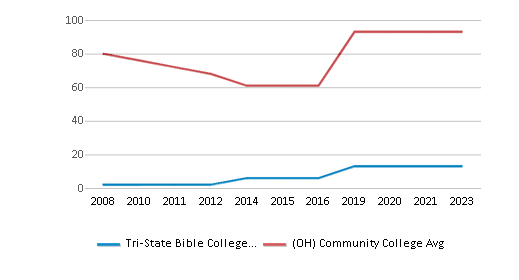
School Calendar
Student Body
The student population of Tri-State Bible College has stayed relatively flat over five years.
The student:teacher ratio of 2:1 has stayed the same over five years.
The Tri-State Bible College diversity score of 0.86 is more than the state average of 0.58. The school's diversity has grown by 20% over five years.
Total Enrollment
29 students
533 students
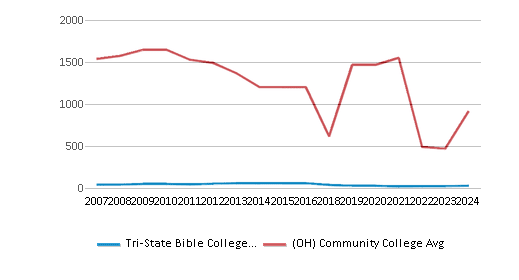
Student : Teacher Ratio
2:1
23:1
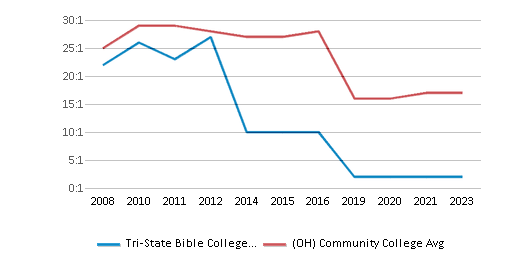
# Full-Time Students
3 students
397 students
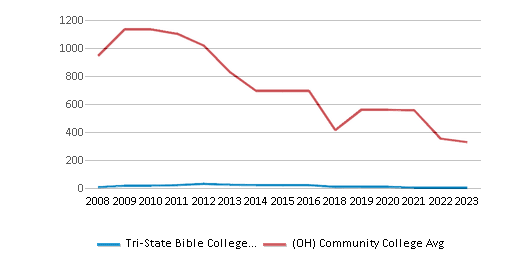
# Part-Time Students
29 students
360 students
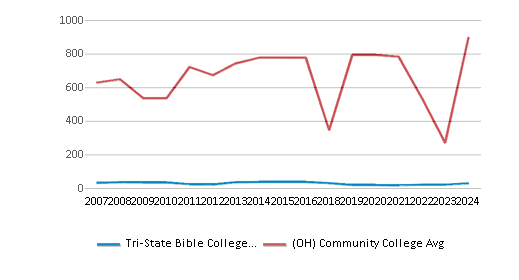
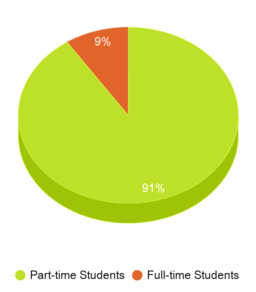
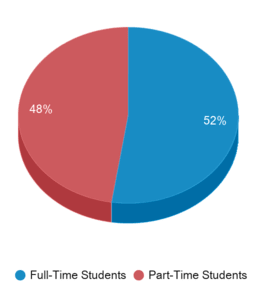
# Enrollment Undergraduate
28 students
308 students
# Full-Time Undergraduate Students
3 students
385 students
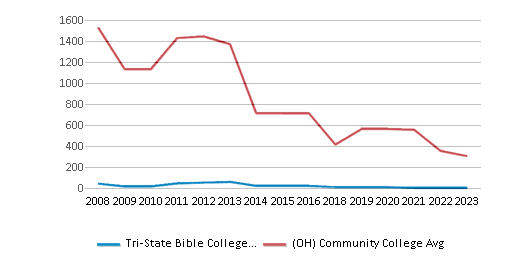
# Full-Time Graduate Students
n/a
10 students
# Part-Time Undergraduate Students
28 students
380 students
# Part-Time Graduate Students
1 students
3 students
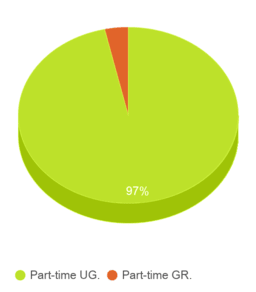
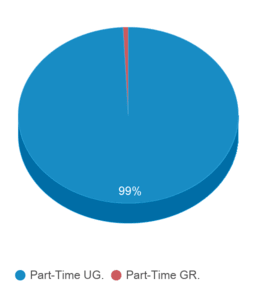
Total Dormitory Capacity
n/a
425 students
% American Indian/Alaskan
2%
n/a
% Asian
10%
4%
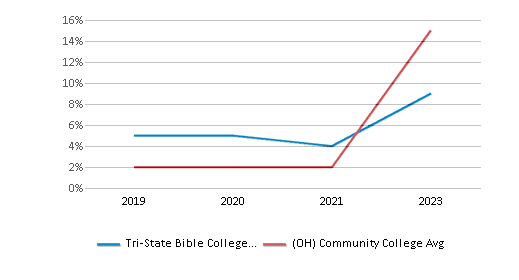
% Hispanic
1%
6%
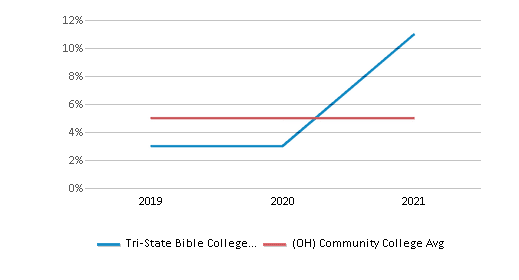
% Black
2%
15%
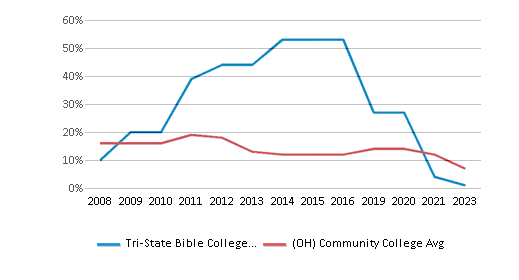
% White
28%
62%
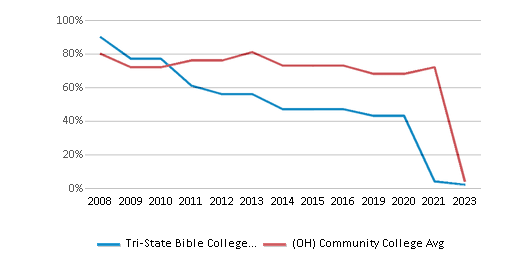
% Hawaiian
23%
2%
% Two or more races
1%
4%
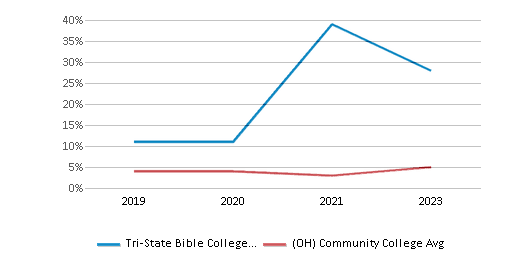
% Non Resident races
32%
1%
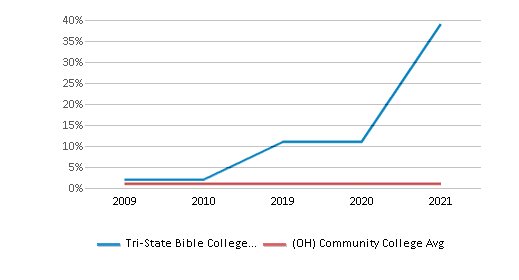
% Unknown races
n/a
6%
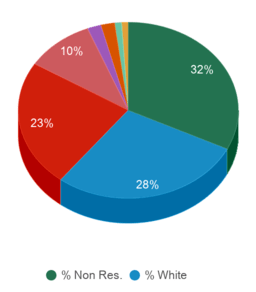
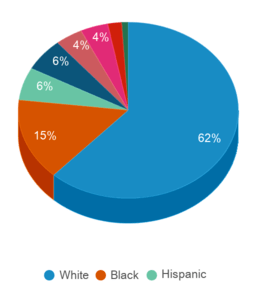
Diversity Score
0.86
0.58
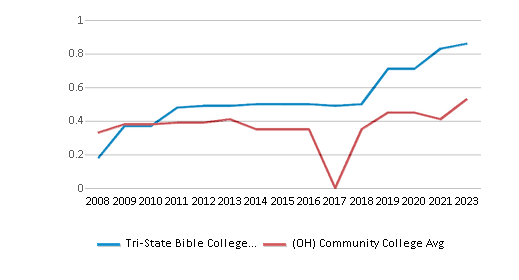
College Completion Rate (Students who graduate in less than 4 years)
n/a
0.5417%
College Completion Rate (Students who graduate in 4 years or more than 4 years)
0.01%
0.2197%
Tuition and Acceptance Rate
The private state tuition of $7,700 is less than the state average of $13,816. The private state tuition has declined by 15% over four years.
Private State Tuition Fees
$7,700
$13,816
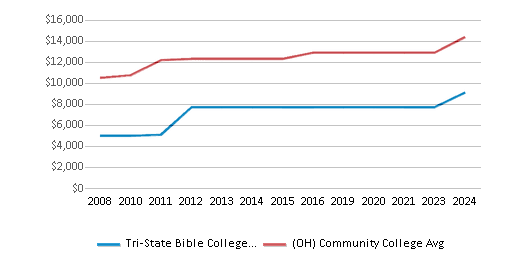
% Students Receiving Some Financial Aid
100%
88%
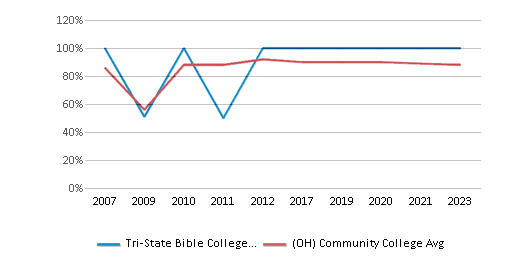
Median Debt for Graduates
n/a
$18,500
Median Debt for Dropouts
n/a
$6,500
Acceptance Rate
100%
85%
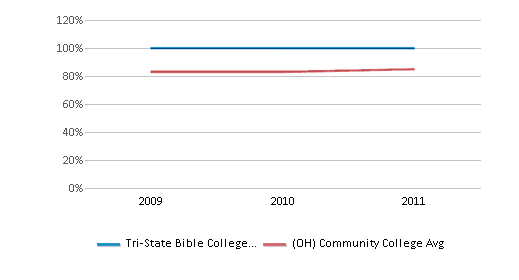
SAT Reading
n/a
460
SAT Math
n/a
475
SAT Writing
n/a
465
ACT Composite
n/a
21
ACT English
n/a
20
ACT Math
n/a
20
Source: 2024 (or latest year available) Integrated Postsecondary Education Data System (IPEDS)
Frequently Asked Questions
How much does Tri-State Bible College cost?
Tri-State Bible College's private state tuition is approximately $7,700.
What is the acceptance rate of Tri-State Bible College?
The acceptance rate of Tri-State Bible College is 100%, which is higher than the state average of 85%.
What is Tri-State Bible College's ranking?
Tri-State Bible College ranks among the top 20% of community college in Ohio for: Diversity in US community colleges and Percent of students receiving financial aid.
Recent Articles

Obtaining Your Bachelor's Degree at a Community College
Explore the evolving landscape of community colleges offering bachelor's degrees, addressing affordability, accessibility, and workforce needs.

A to Z of Community College Certificates and Courses
From business and healthcare to technology and skilled trades, the article showcases the breadth of options available to students seeking to enhance their knowledge, develop new skills, or pursue career advancement.

What is a Community College?
This comprehensive guide explains what a community college is, its history, and its role in higher education. It covers the types of programs offered, differences from four-year colleges, benefits of attending, and important considerations for prospective students, providing valuable insights for those exploring educational options.






